Block B is kept on Block A and a force F = 50 N pushes B down as shown in figure. Block A is kept on a rough surface with μs=0.2 and μk=0.1 . What is the maximum force f2 which can be applied so that the system remains at rest?
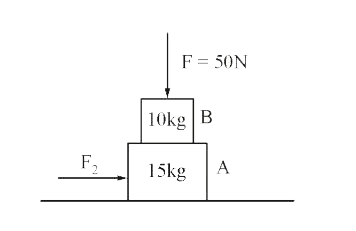
10 N
30 N
60 N
50 N
The correct Answer is:c

F2=F
F2=μsN=2×300
F2=60N
Similar Questions
Block B of mass m has been placed on block A of mass 3 m as shown. Block A rests on a smooth horizontal table. F1 is the maximum horizontal force that can be applied on the block A such that there is no slipping between the blocks. Similarly, F2 is the maximum horizontal force that can be applied on the block B so that the two blocks move together without slipping on each other. When F1andF2 both are applied together as shown in figure.
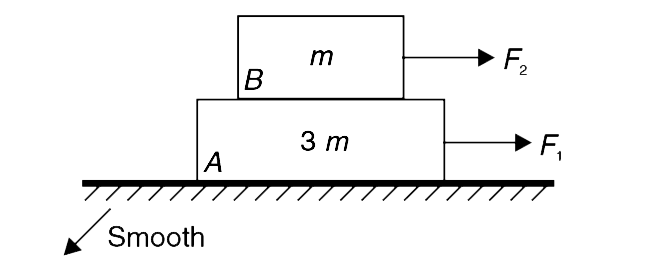
(a) Find the friction force acting between the blocks.
(b) Acceleration of the two blocks.
(c) If F2 is decreased a little, what will be direction of friction acting on B.
View SolutionA block of mass m rests on a bracket of mass M. The coefficients of friction between block and bracket are μs and μk . The bracket rests on a frictionless surface. What is the maximum force F that can be applied if the block is not to slide on the bracket?
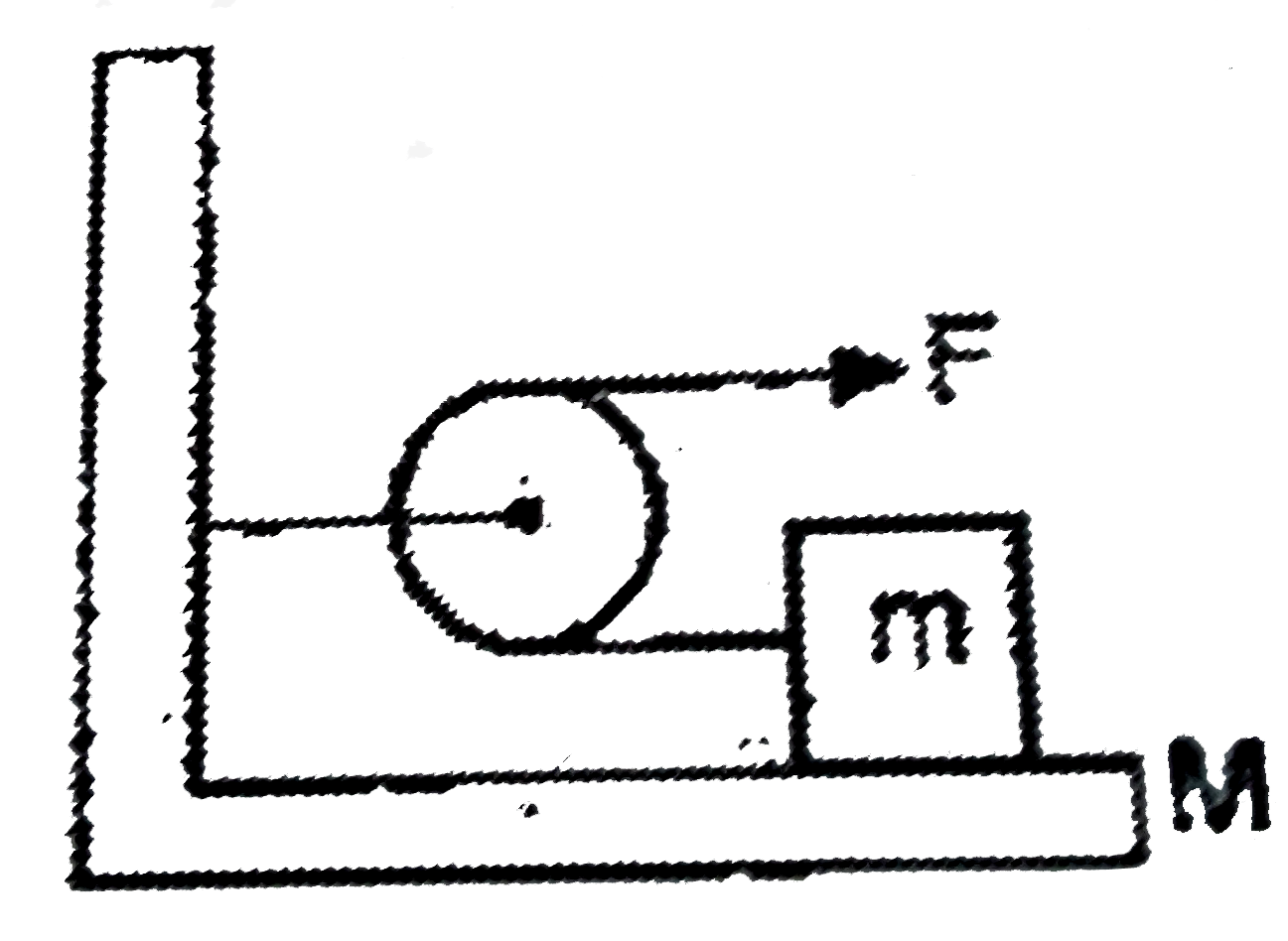
View Solution
Knowledge Check
A block of mass √3kg is kept on a frictional surface with μ=12√3. The minimum force to be applied as shown to move the block is
 A5NB20 NC10 ND20/3N
A5NB20 NC10 ND20/3NA block of mass √3kg is kept on a frictional surface with μ=12√3. The minimum force to be applied as shown the move the block is
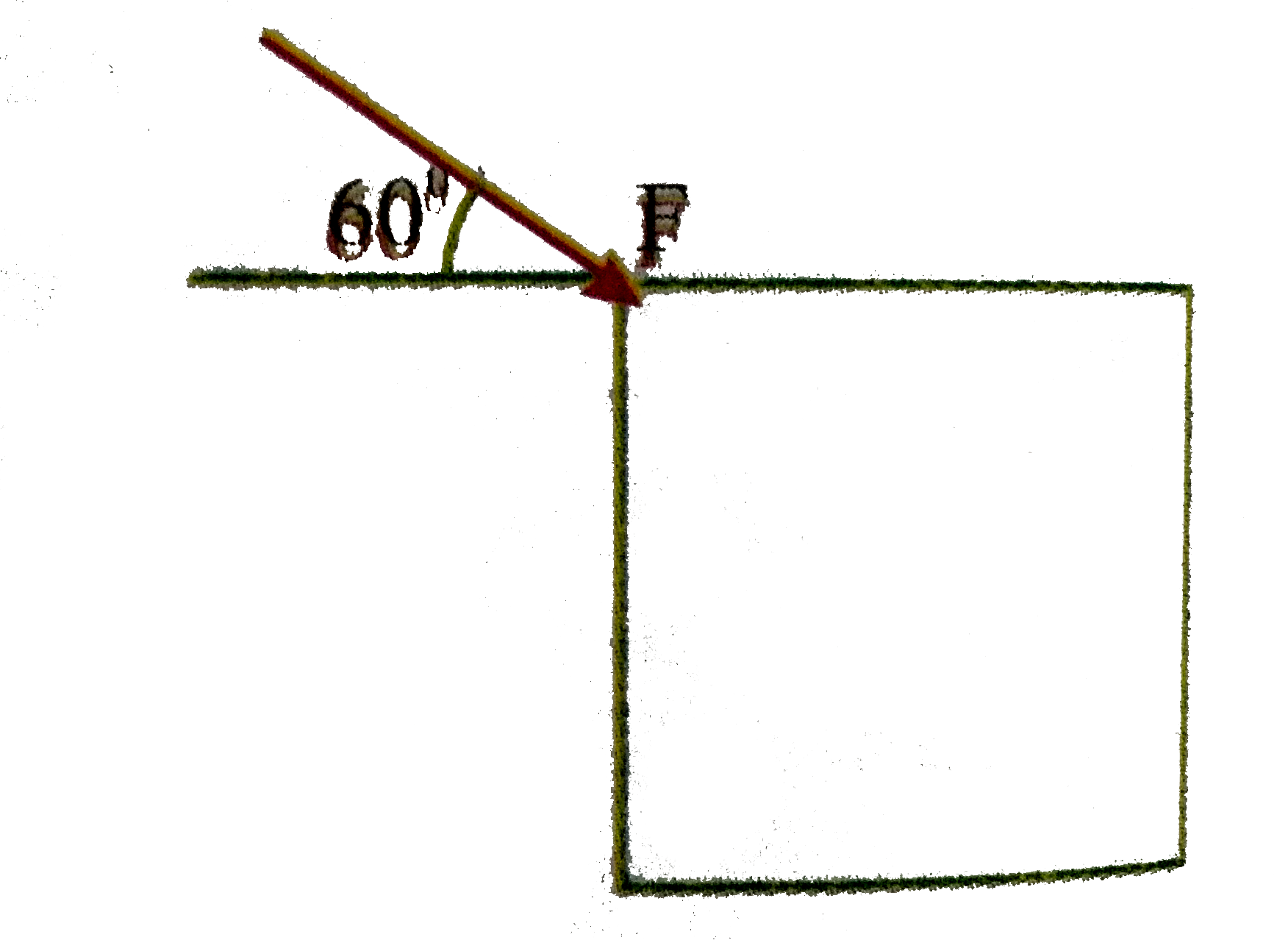 .A5NB20NC10ND20/3N
.A5NB20NC10ND20/3NA 3kg block of wood is on a level surface where μs=0.25 and μs=0.2A force of 7N is being applied horizontal to the block Mark the correct statement(s) regarding this situation.
AIf the block is initially at rest , it will remain at rest and friction force will be about ?7NBIf the block is initially moving than it will continue its motion forever if the force applies is in the direction of the motion of the blockCIf the block is initially moving and the direction of applied force is mass as that of motion of block , than block moves with an acceleration of 1/3ms−2 along its initial direction of motionDIf the block is initially moving and direction of applied force to that of initial motion of the blockthan the block decelerates comes to a stop and starts moving in the opposite direction.
A block of mass 1 kg in kept on a rough horizontal surface with μs=0.1 . A force of 0.5 N is applied as shown in the figure. What is the frictional force applied by ground on the block?

View SolutionTwo blocks "10kg" and "5kg" are kept on two inclined surface (1) and (2) respectively as shown in the figure.mu_(1)& mu_(2)" are the coefficient of friction respectively of surfaces 1&2, mu_(1)=0.1& mu_(2)=0." what should be the force F with which 5kg must be pulled so, that the 10kg block does not move down the plane?(pulleys are tight& smooth &ropes are light,take "g=10m/s^(2)" )
View SolutionA block of mass 5 kg is kept on a rough horizontal surface. The coefficient of friction for the contact force block and surface are μs=0⋅1andμk=0⋅9 respectively . A horizontal force F given by F 0⋅5t is applied at t = 0 . Here t represent time in seconds . Determine the force of friction and acceleration of the block at
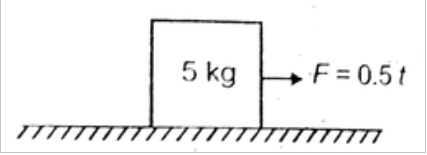
(i) t = 1s (ii) t= 10 s (iii) t = 12 s
View SolutionTwo blocks A and B of masses mA=1kgandmB=3kg are kept on the table as shown in figure. The coefficient of friction between A and B is 0.2 and between B and the surface of the table is also 0.2. The maximum force F that can be applied on B horizontally, so that the block A does not slide over the block B is ________ (in N): [Take g=10m/s2]
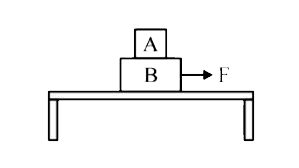
View SolutionA block of weight W is kept on a rough horizontal surface (friction coefficient μ). Two forces W/2 each are applied as shown in the choose the correct statement
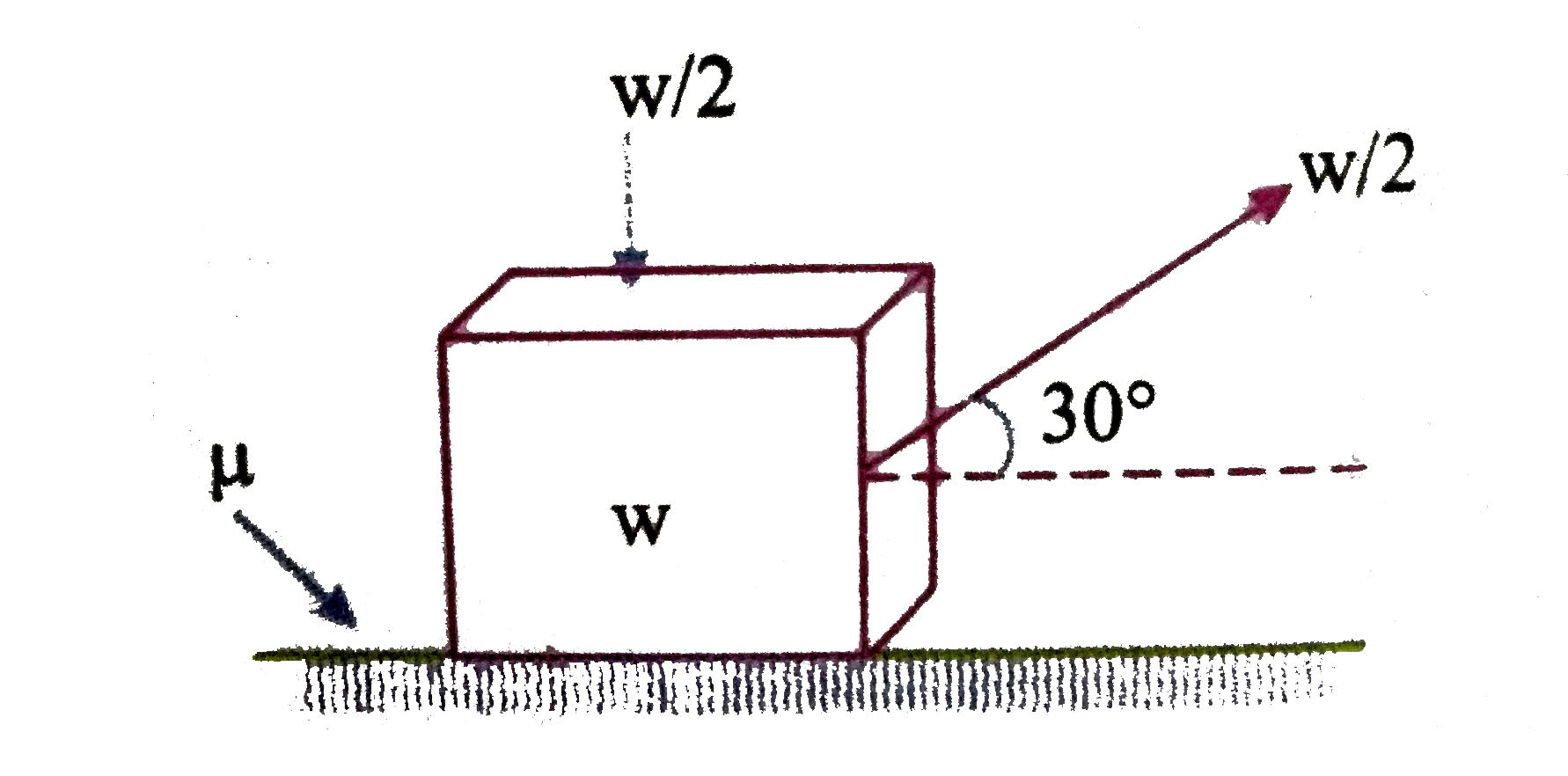 .
.
View Solution

